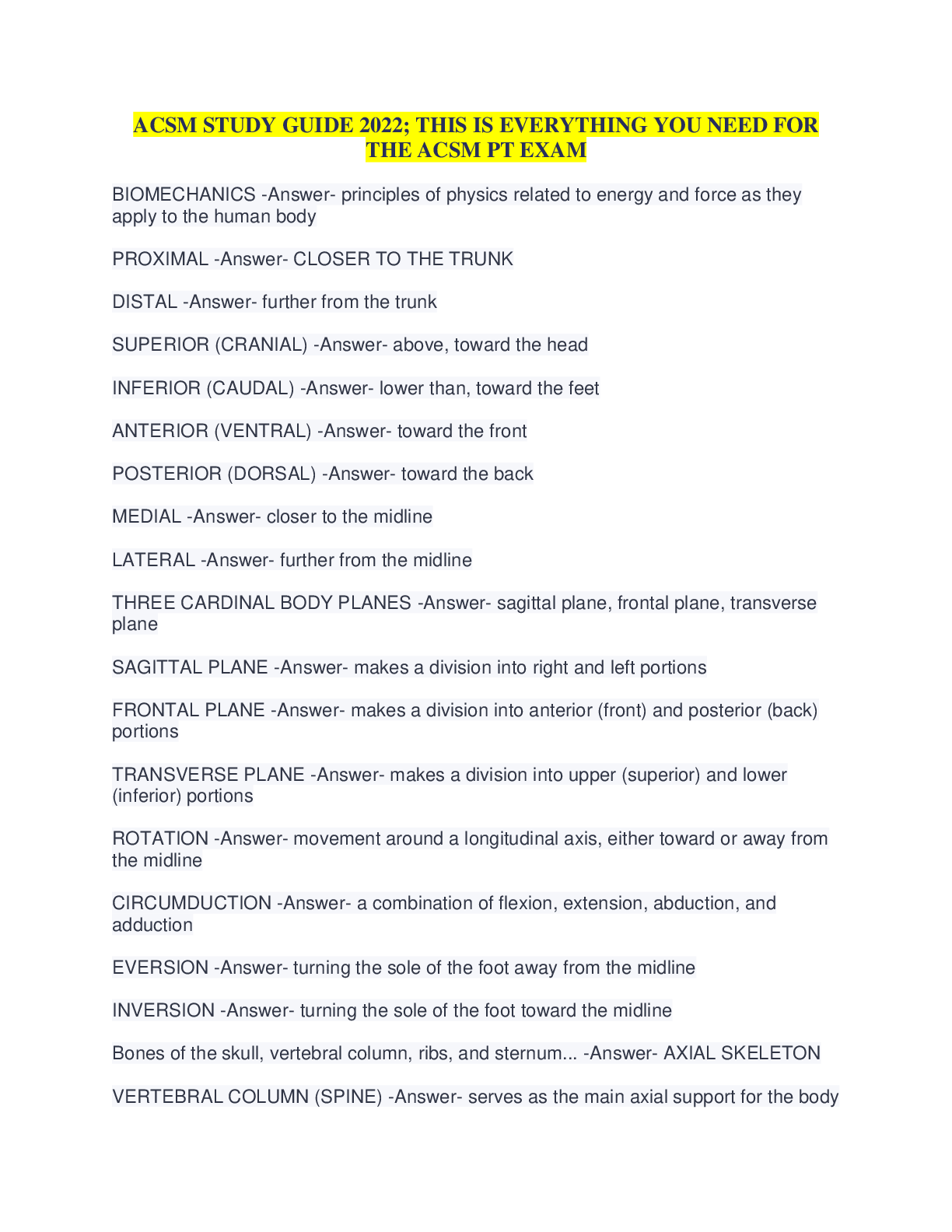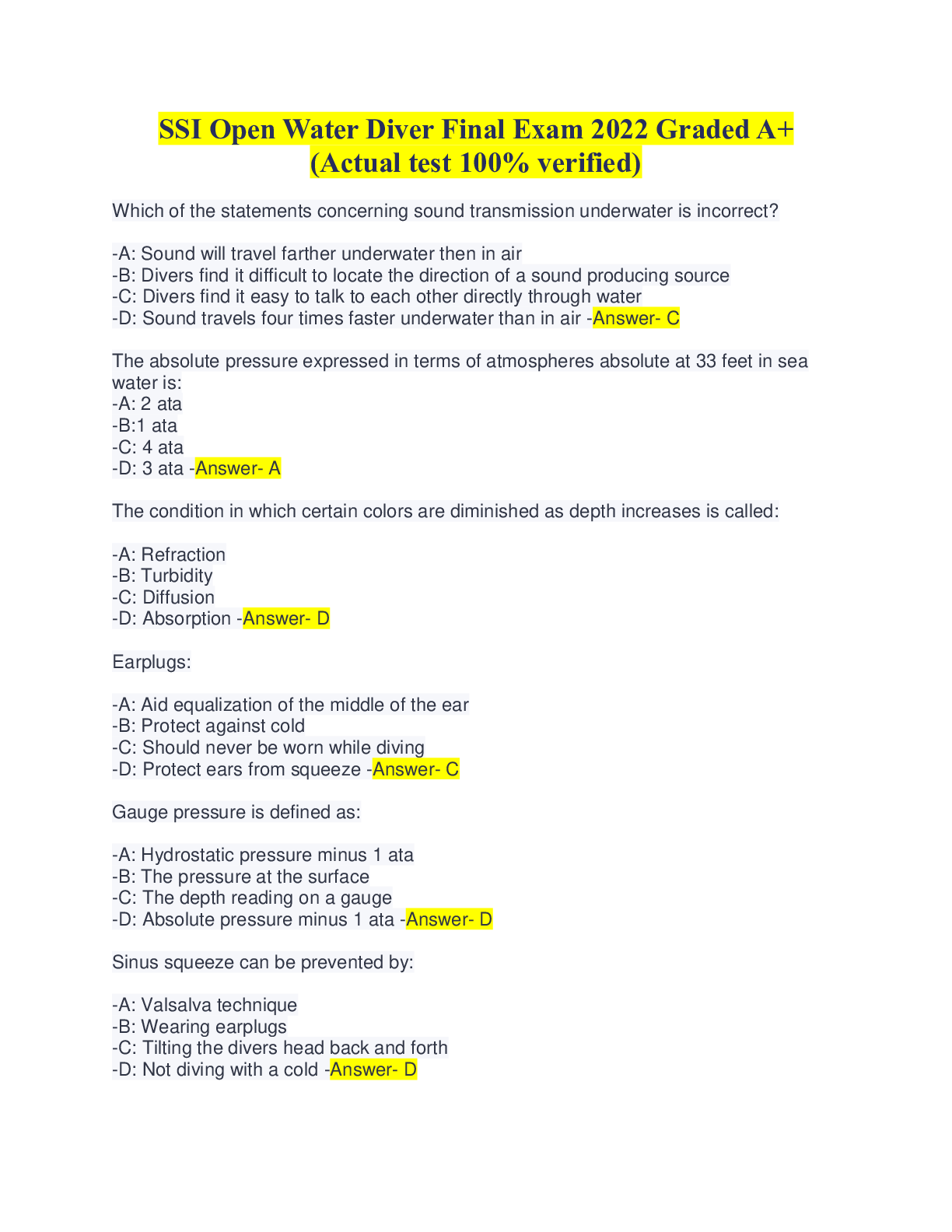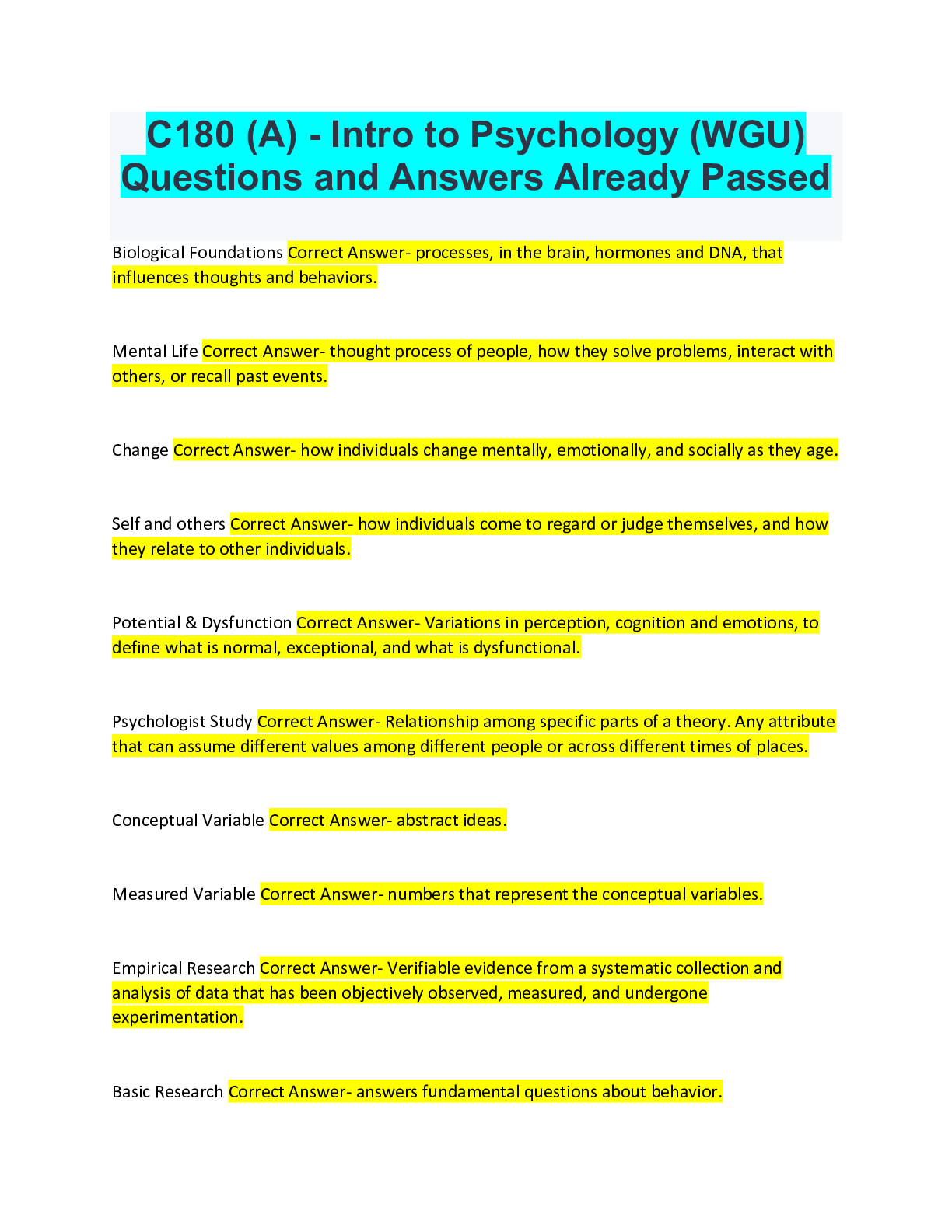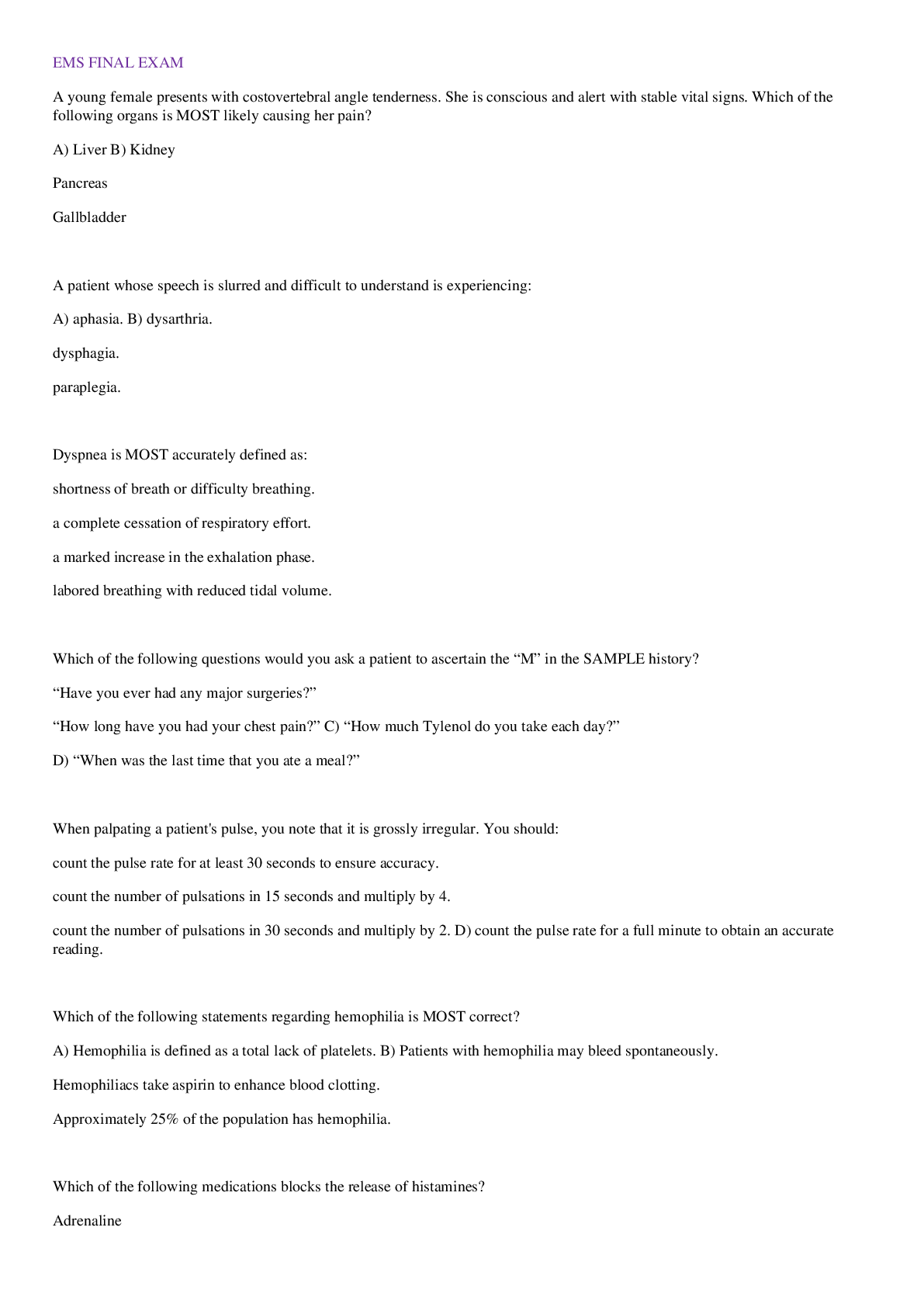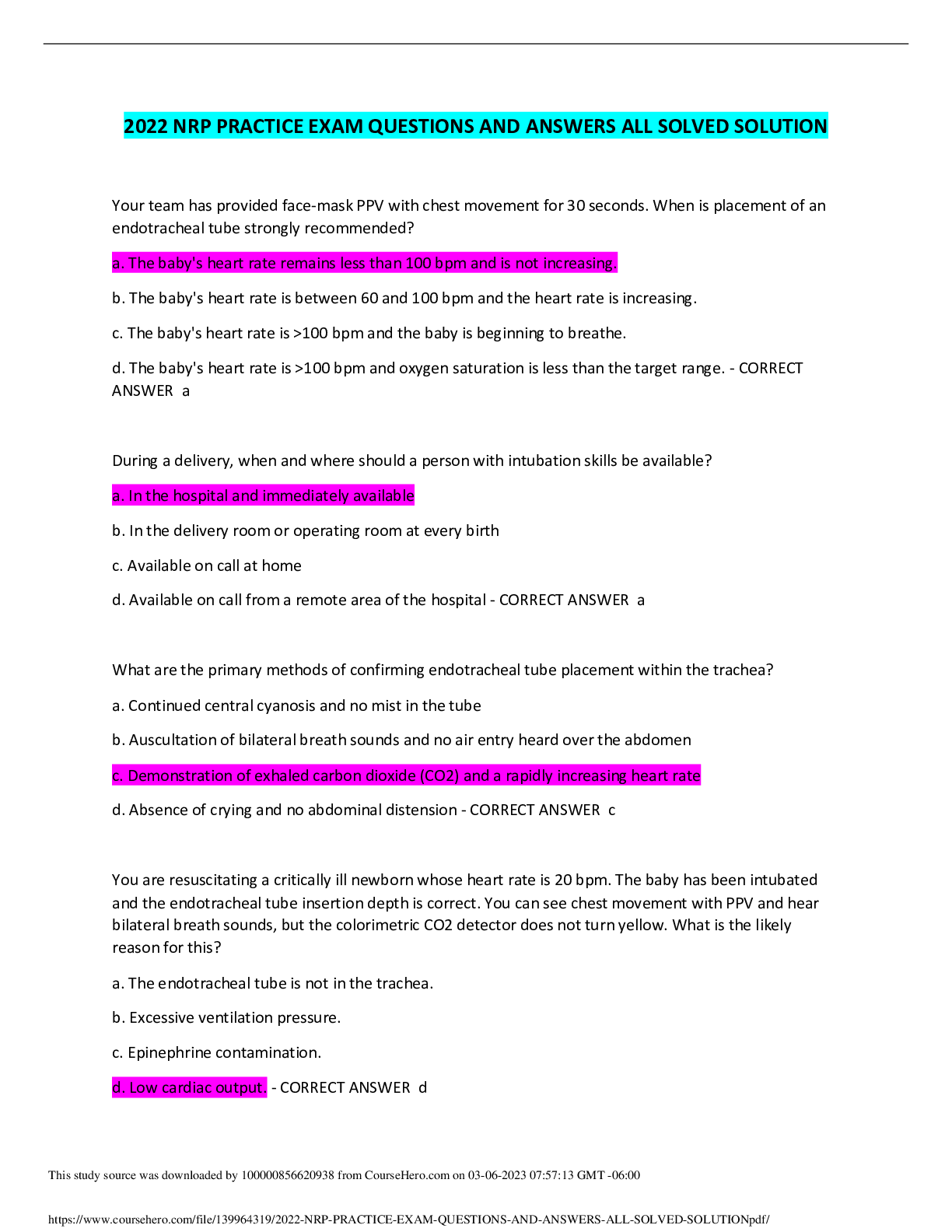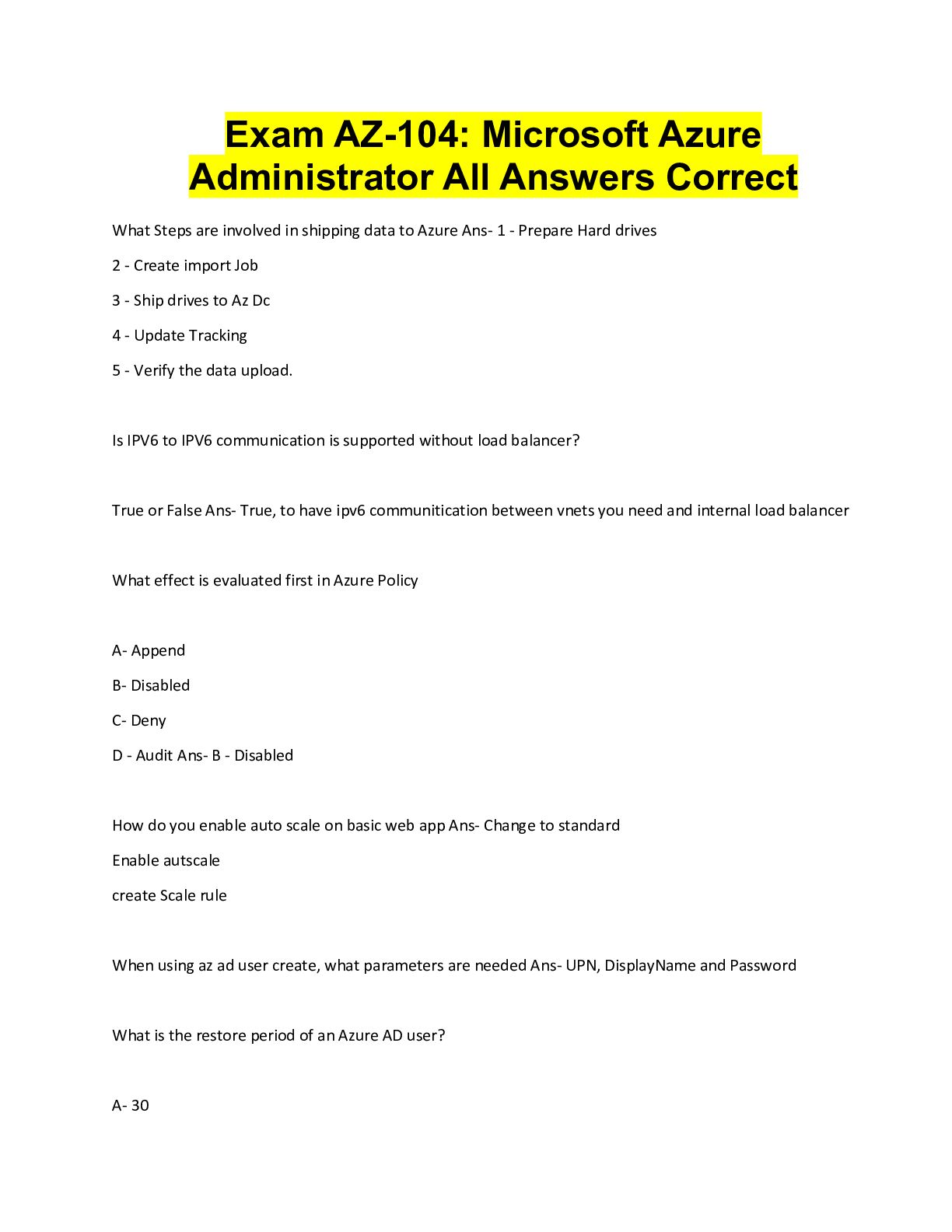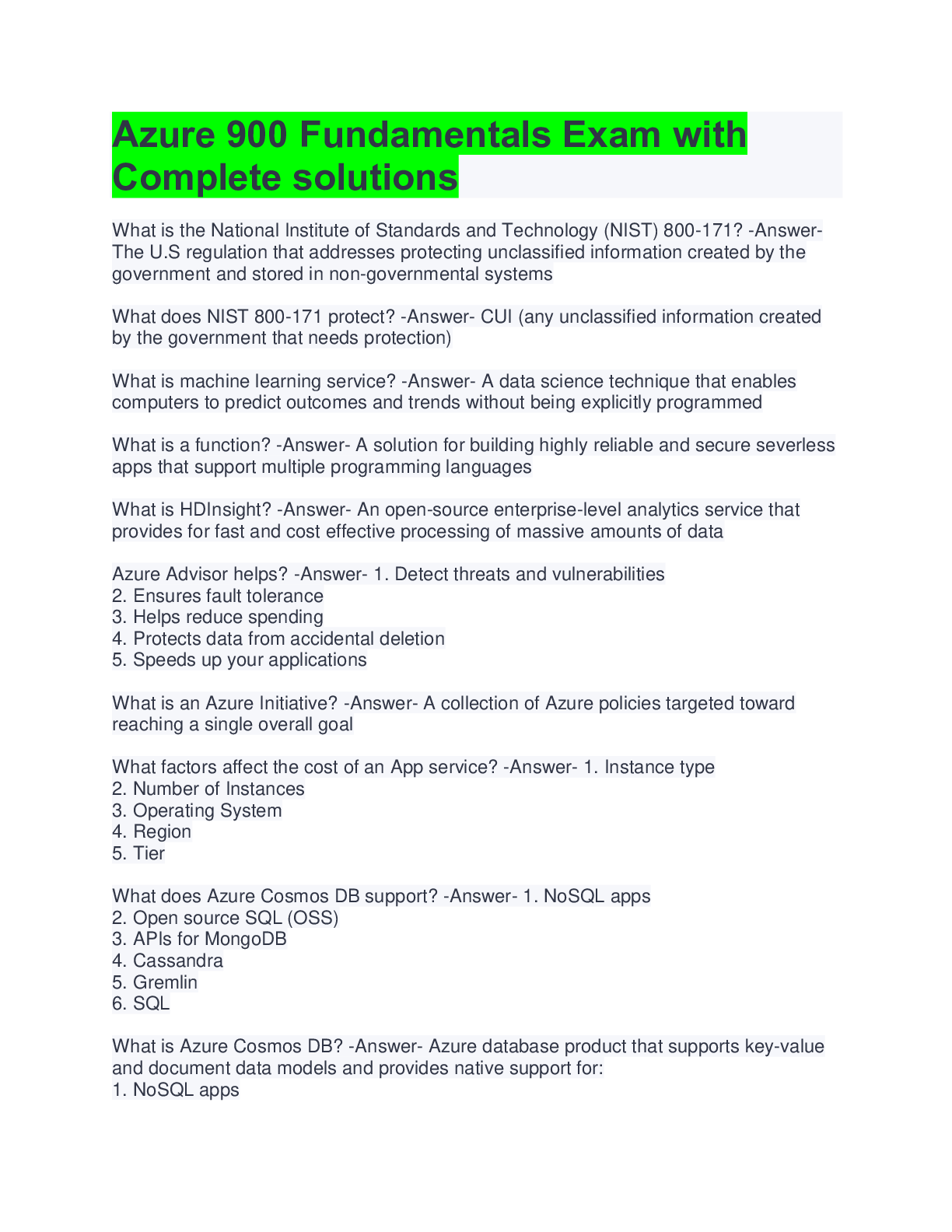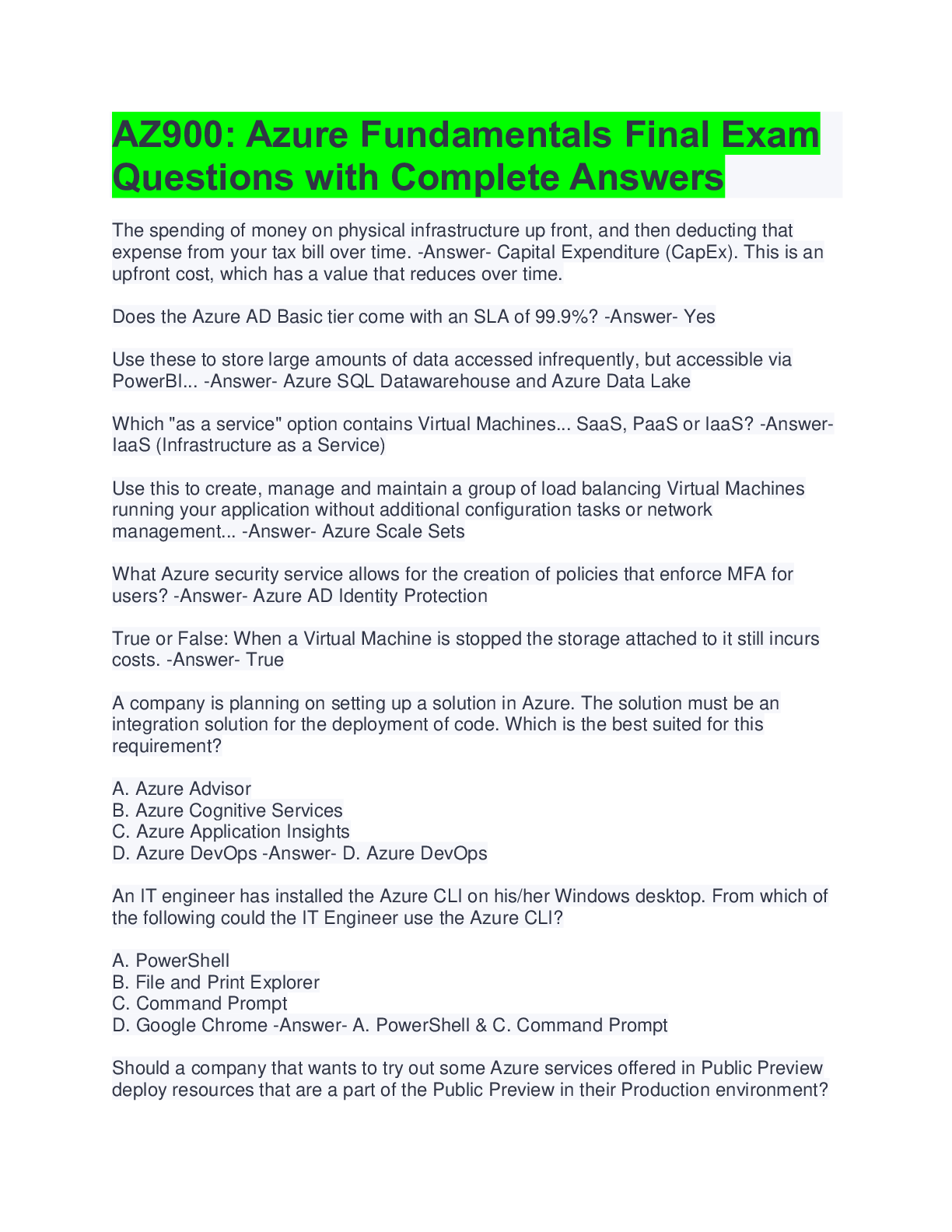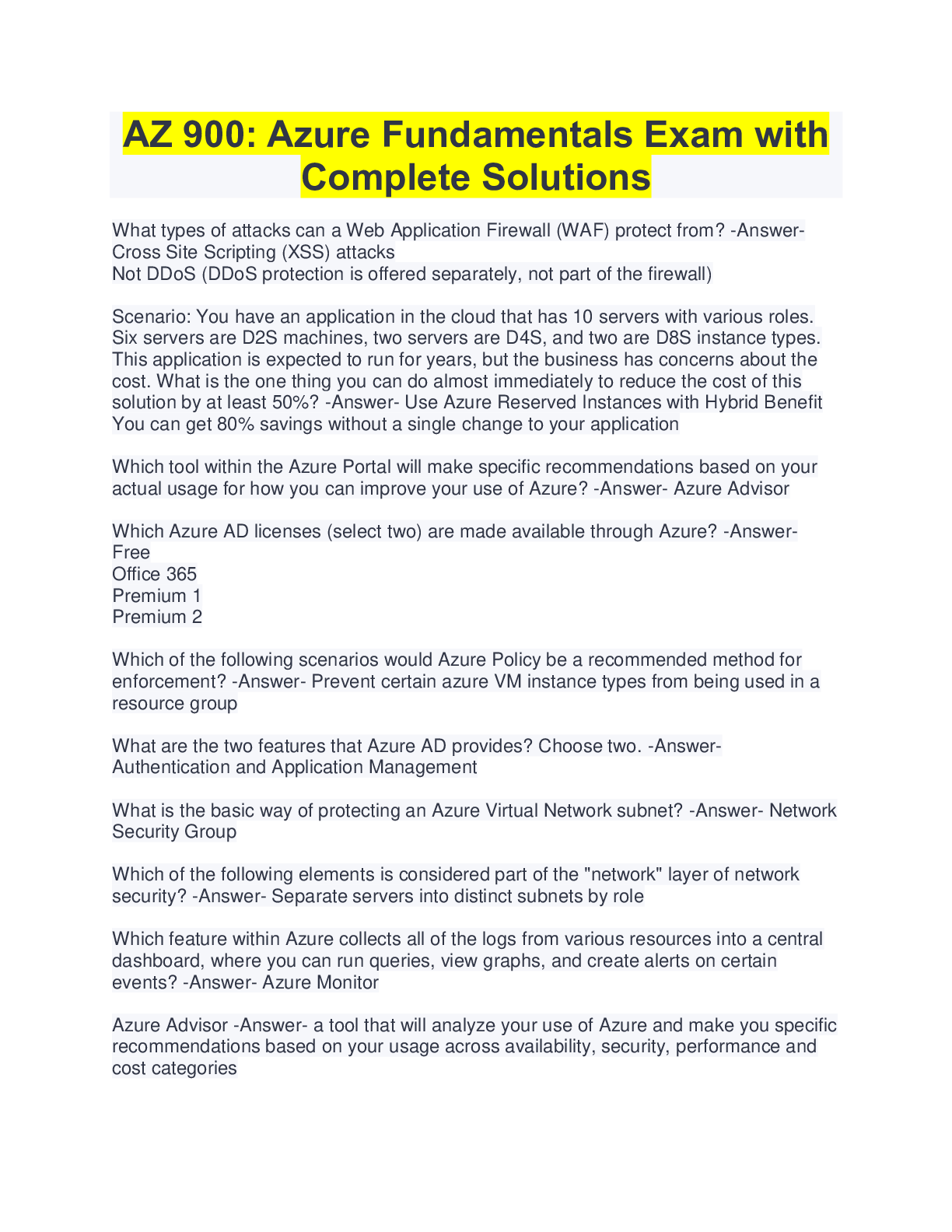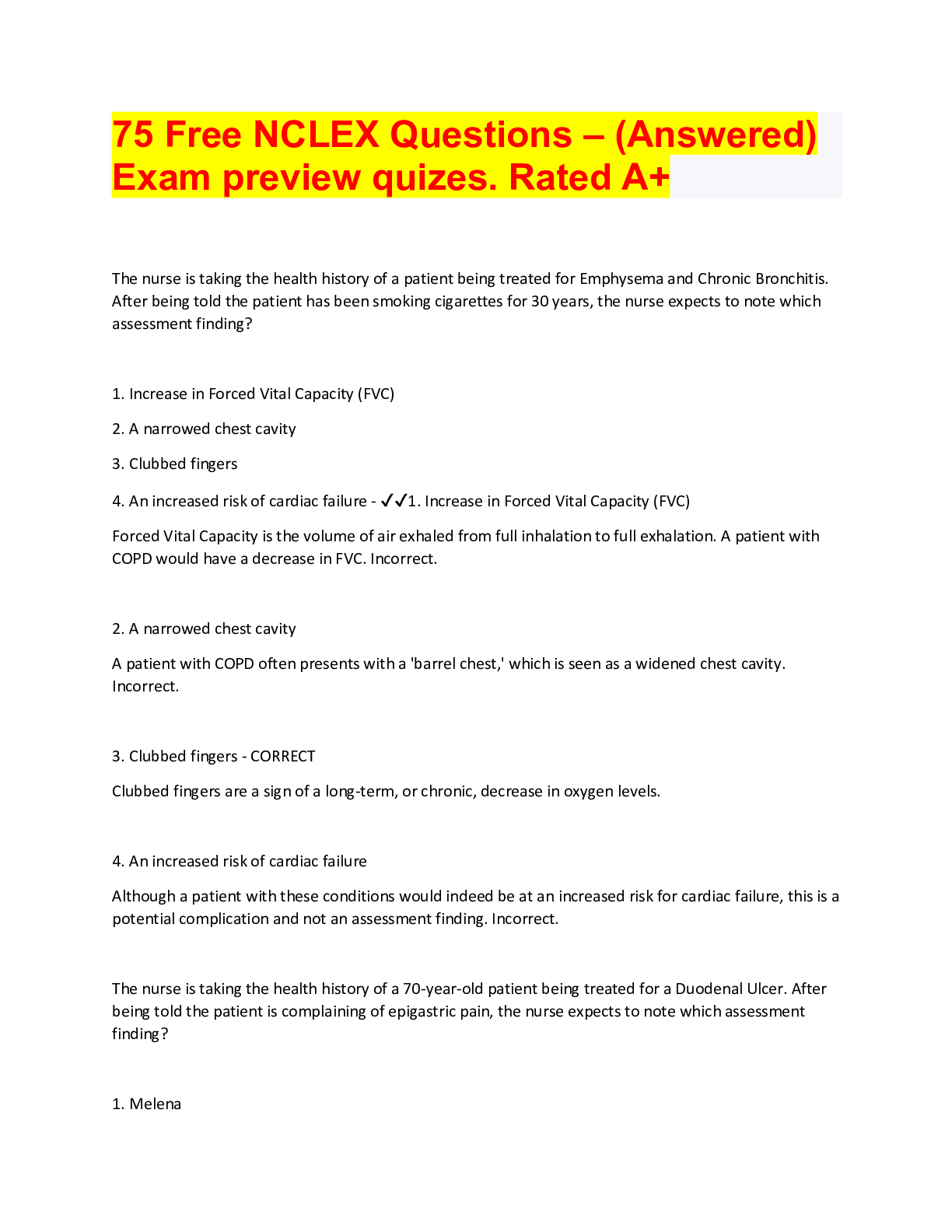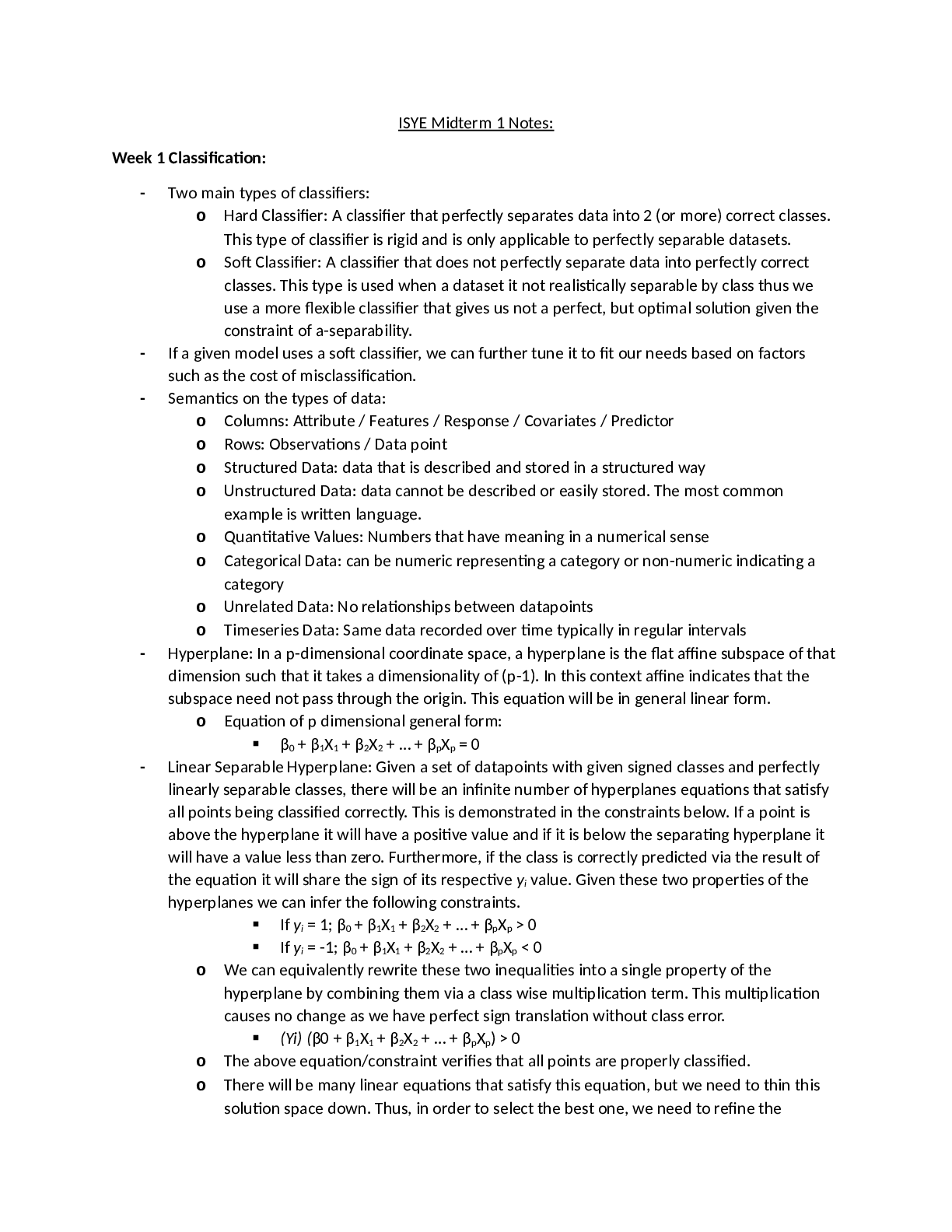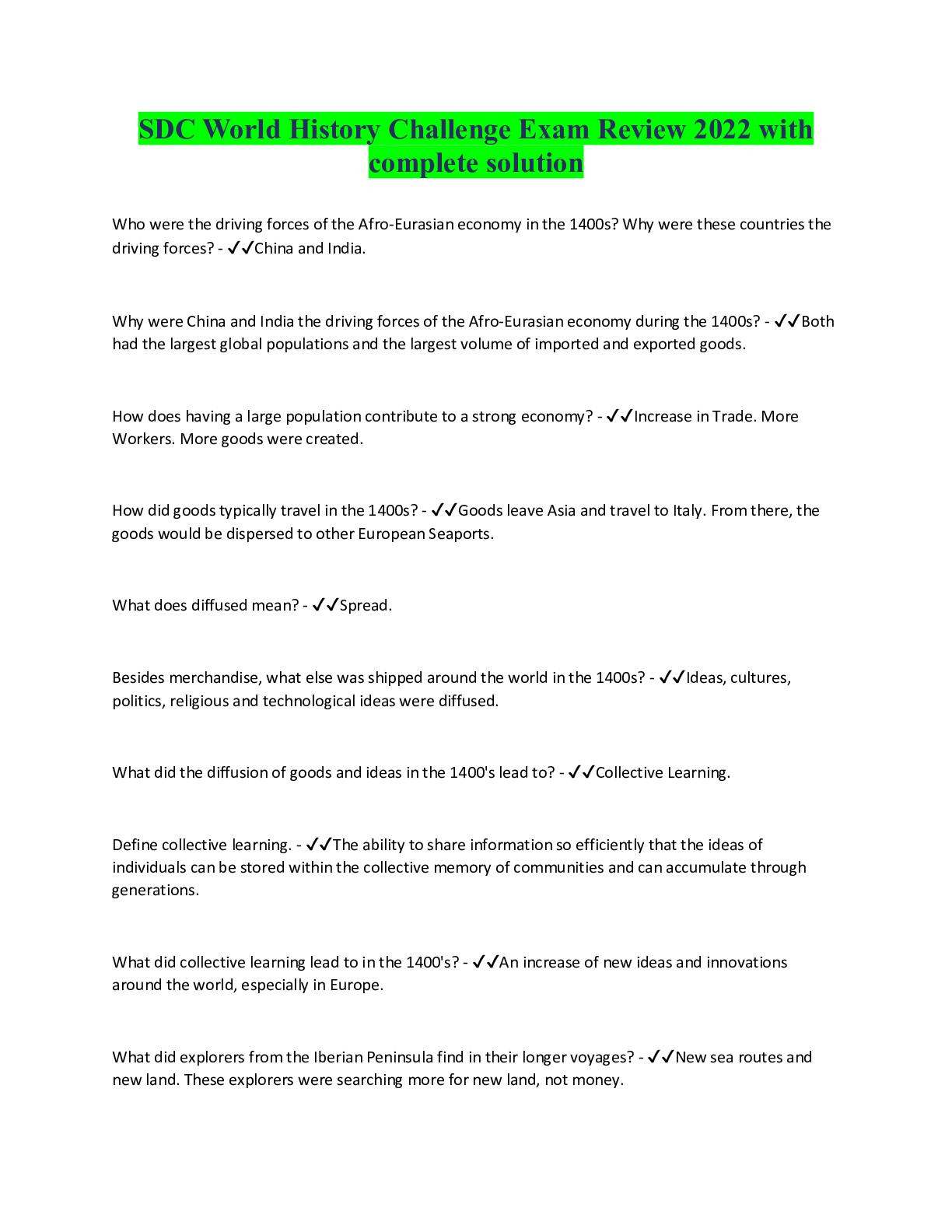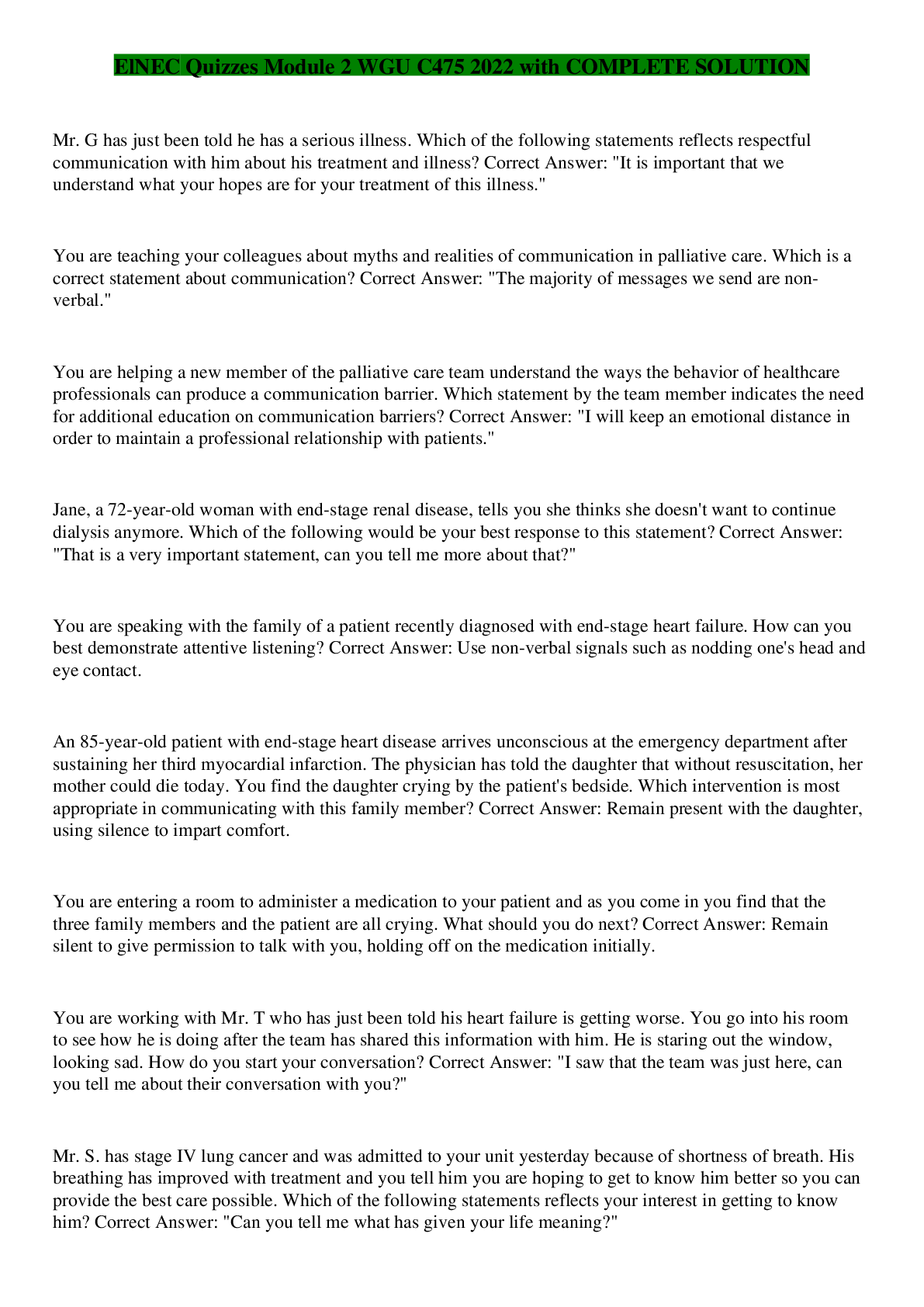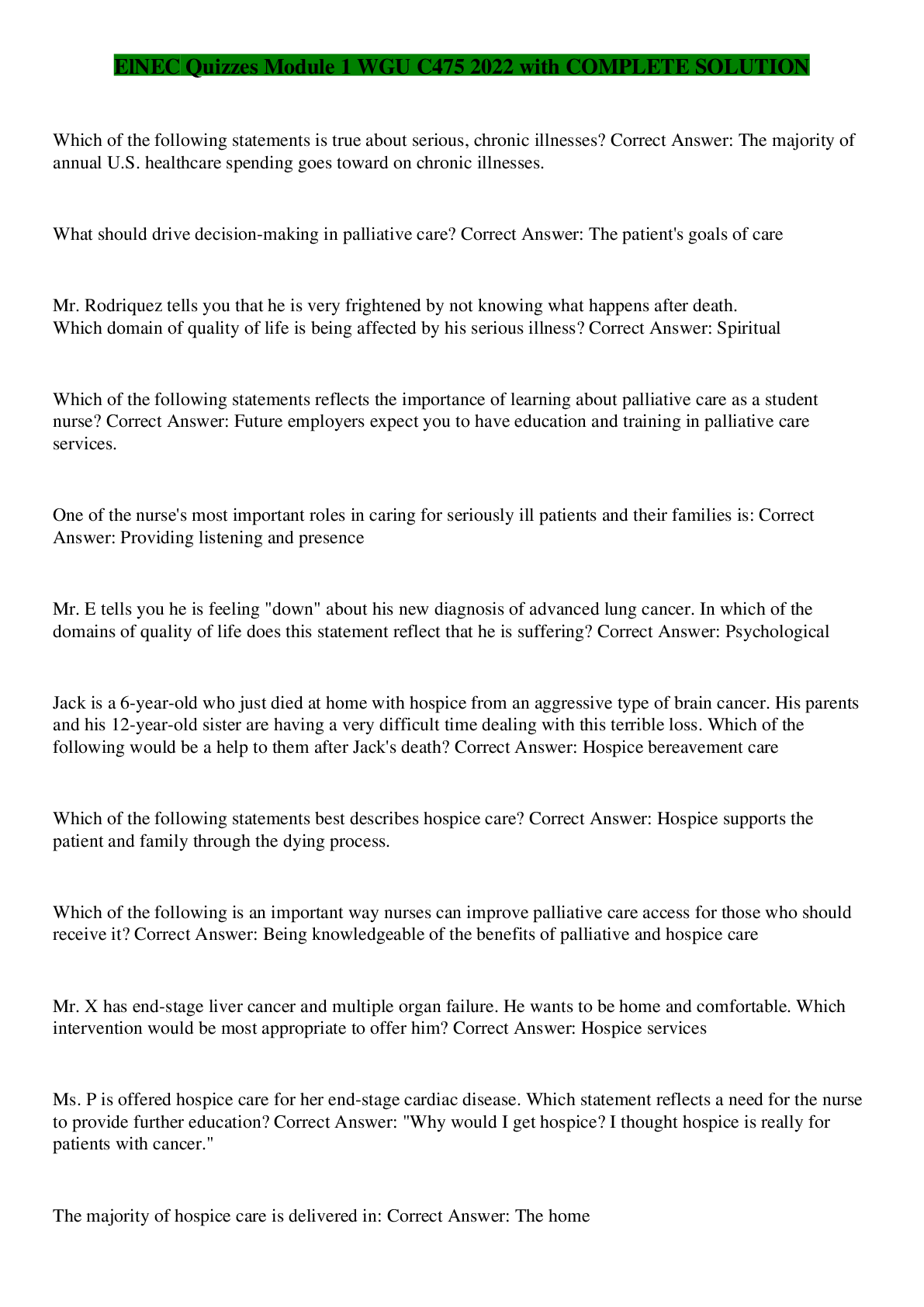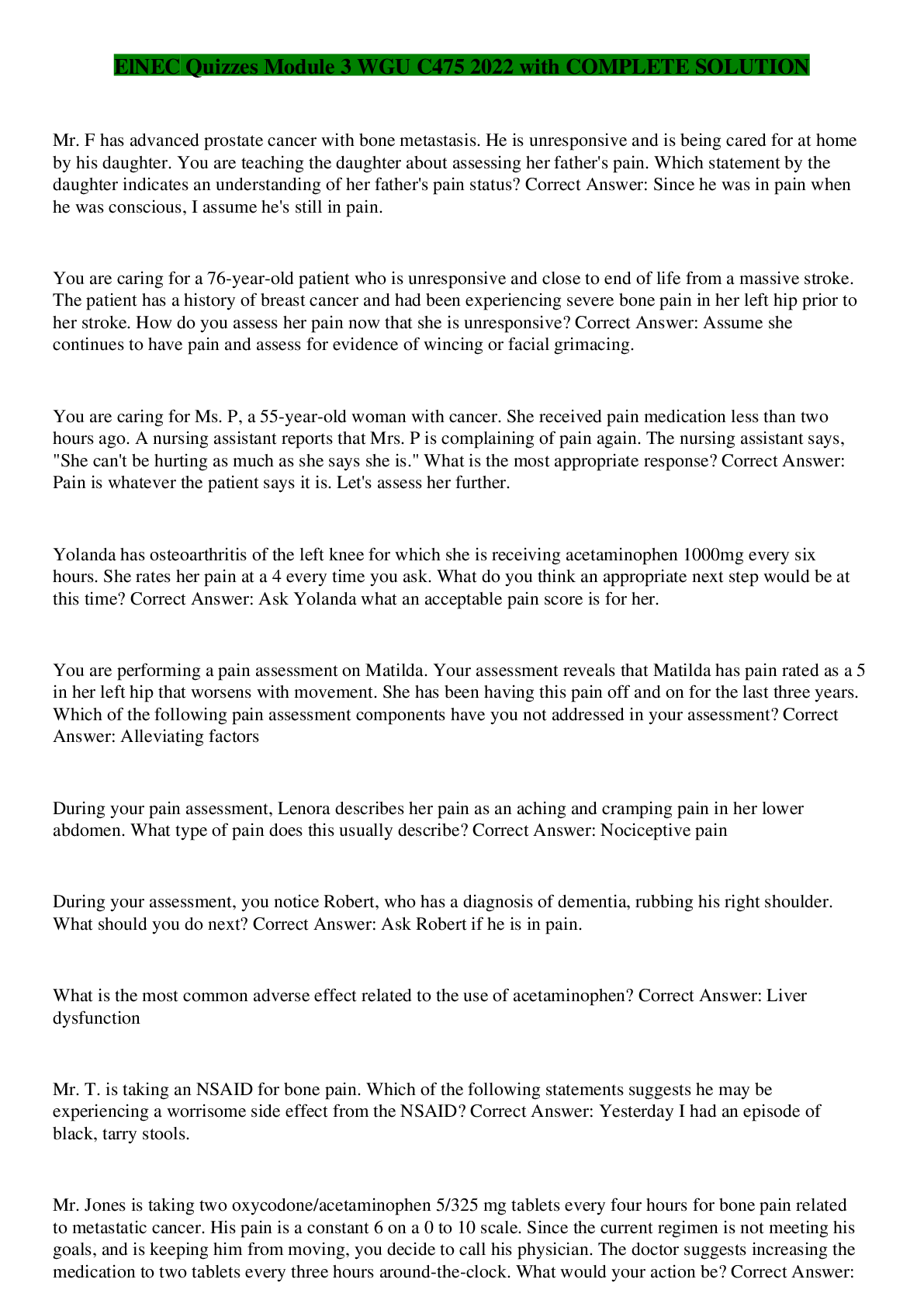Health Care > QUESTIONS & ANSWERS > ACSM Personal Trainer Certification Exam 2022 with complete solution (All)
ACSM Personal Trainer Certification Exam 2022 with complete solution
Document Content and Description Below
ACSM Personal Trainer Certification Exam 2022 with complete solution ADL -Answer- One's ability to perform daily tasks such as self care and chores. Acroymn Physical Activity -Answer- Transition... from rest to active movement Exercise -Answer- Planned and structured physical activity to improve one or more of the 5 components of fitness 5 Components of Fitness -Answer- 1. Cardiorespiratory Endurance 2. Muscle Endurance 3. Muscle Strength 4. Flexibility 5. Body Composition Fitness Conditioning -Answer- Health Related: Focuses on enhancing QoL, preventing disease, moderate-intensity PA Fitness Conditioning: Focuses on exercise regimens based on recommendations for improving fitness SAID -Answer- In order to improve the goal, you must practice the goal. Ex. If the goal is a 5K, you must run to train for it Rate of Remodeling -Answer- Remodel > Damage --> increase training effort Damage > Remodel --> decrease training effort (or may cause overuse/injury) Over Training -Answer- Injury, inc resting HR, fatigued throughout day, low performance FITT-VP -Answer- Frequency (how often) Intensity (how hard) Time (duration) Type (mode) Volume (overall amount) Progression (how to advance) ATP-CP (Phosphagen) System -Answer- Transfers high energy phosphate from Creatine Phosphate to rephyosphorylate ATP from ADP using the enzyme creatine kinase. Anaerobic 0-30 sec high intensity work sprints, weight lifting ADP+CP --Creatine kinase--> ATP+C Anaerobic Glycolysis (Lactic Acid) -Answer- The rapid breakdown of carbohydrate molecules,either glycogen or glucose, occuring without the presence of oxygen. Anaerobic Glucose & lactic acid :30-3 mins high intensity work 400-800m sprint, 100m swim Oxidation System -Answer- Metabolic pathway that can use fat, protien, and carbohydrate as substrates to produce ATP. Fat oxidation 3+ minutes important for endurance capacity limited by O2 and Cals available *Unfit client has decreased ability to deliver O2 from dec capillary density preventing delivery O2 Physiological Adaptations -Answer- 1. Oxygen Deficit - initial stages of CV training bout referred to as lag in O2 consumption, relying on anaerobic metabolism 2. Steady State - achieved w/ sustained CV once O2 supplied equals O2 demanded. Inc fit, reach SS faster and endurance depends how long you stay here. 3. EPOC - O2 debt, uptake remained elevated post exercise for several minutes (or house if longer bout); EPOC effect is to restore CP/ATP in muscles and O2 in blood; "after burn" effect Oxygen Deficit -Answer- Initial stages of CV training bout referred to as lag in O2 consumption, relying on anaerobic metabolism Steady state -Answer- Achieved w/ sustained CV once O2 supplied equals O2 demanded. Inc fit, reach faster and endurance depends how long you stay here. EPOC (Excess Postexercise Oxygen Consumption) -Answer- O2 debt, uptake remained elevated post exercise for several minutes (or house if longer bout); Effect is to restore CP/ATP in muscles and O2 in blood; "after burn" effect Sino Atrial Node -Answer- Pacemaker of the heart, in RA, initiates contraction Atrioventricular Node -Answer- Slows down the heart contracting Right Chambers -Answer- RA receives deoxy blood from vena cava. Blood travels to RV through tricuspid valve. Leaves RV via pulmonary semilunar valve to pulmonary system. Left Chambers -Answer- LA receives oxy blood from veins. Travels to LV through bicuspid valve then to aorta through the aortic semilunar valve where it then travels through the body's arteries to deliver oxygen. Pulse Sights -Answer- Carotid (not recommended to perform on someone) Brachial Femoral Radial (most recommended) Heart Rate -Answer- Avg is 72bpm resting (normal is 60-100bpm) Good gauge for clients to see how fit they are becoming Tachycardia/Bradychardia -Answer- Faster than normal heart rate, >100 bpm Slower than normal heart rate, < 60 bpm Stroke Volume (SV) -Answer- The amount of blood pumped from the left ventricle in one beat Cardiac Output (CO) -Answer- The amount of blood pumped from the heart in one minute Arteriovenous Oxygen Difference -Answer- Difference between oxygen content of arterial and venous blood Pulmonary Ventilation -Answer- Volume of air exchanged per minute VO2 Max -Answer- Highest rate and amount of O2 achieved at maximal physical exertion Acute CR Response (to Aerobic Exercise) -Answer- Increase: HR, SV, CO, AOD, BF, systolic BP, pulmonary ventilation, O2 consumption [Show More]
Last updated: 2 years ago
Preview 1 out of 17 pages

Buy this document to get the full access instantly
Instant Download Access after purchase
Buy NowInstant download
We Accept:

Reviews( 0 )
$8.00
Can't find what you want? Try our AI powered Search
Document information
Connected school, study & course
About the document
Uploaded On
Sep 13, 2022
Number of pages
17
Written in
Additional information
This document has been written for:
Uploaded
Sep 13, 2022
Downloads
0
Views
172
